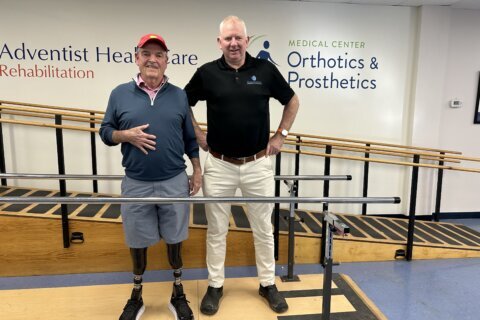The Fairfax County Police Department in Virginia wants people to know that it’s fawning season, and it’s not unusual for newborn deer to be discovered on lawns, in flower beds and gardens, or in areas of tall grass near homes. What should people do should they discover one? The department said it should be left alone.
No good deed going unpunished and well-intentioned people trying to rescue what they believe to be abandoned wildlife babies could be doing more harm than good.
“The mother may be out of sight but is likely nearby … The mother deer will be wary of you, and human presence could prevent her from returning. Give the fawn space and keep children and pets away to allow the doe to return and care for her fawn,” police said.
Fawning season – Don’t be a fawn kidnapper. https://t.co/QBpdjFJjjg #FCPD pic.twitter.com/nJUSgGB3JI
— Fairfax County Police (@FairfaxCountyPD) May 4, 2022
“You should only seek help for a fawn if it is showing obvious signs of injury or distress, such as wandering and crying incessantly; has swollen eyes, shows signs of trauma, such as visible wounds or broken bones; or if there is a dead lactating doe nearby. If an animal is displaying these signs, contact a licensed wildlife rehabilitator, veterinarian or the Animal Protection Police for further assistance and instruction,” according to Fairfax County Animal Protection Police.
It’s routine for wildlife offspring of all sorts to be left alone by parents while they go away to forage and produce milk.
“At HRA, we see these animals come in as abandoned orphans, when in reality, well-meaning people have unnecessarily removed them from their parents’ care,” according to the Humane Rescue Alliance. “If you find yourself in the presence of a baby wild animal and you are unsure what to do, always call a professional before attempting to handle the baby.”
What about baby birds?
Experts with the National Audubon Society recommend that if you think you’ve found a sick or wounded fledgling or nestling, call a rehabber, state wildlife agency, or veterinarian right away — and don’t feed it.
What are called nestlings are baby birds with no or nearly no feathers that have likely fallen out of a nest. The National Audubon Society said if you encounter one, return the bird to a nest — whether real or homemade — keep an eye out for the parents. If they don’t return within an hour, call a wildlife rehabilitation center.
Details on what to do in other specific circumstances can be found on the National Audubon’s Society website.
In D.C., the Humane Rescue Alliance works with City Wildlife to rehabilitate lots of sick and injured creatures such as birds, opossums, squirrels, turtles, snakes, frogs, or lizards are rehabilitated.
Signs that an animal may need rescuing, according to the Humane Rescue Alliance include:
- Bleeding or open wounds
- They’ve fallen from another animal’s mouth
- The can’t use a leg or wing
- They’re cold, wet or covered with maggots or flies
The Humane Rescue Alliance has tips for how to handle encounters with baby rabbits, squirrels, foxes and raccoons on its website.
Licensed Wildlife Rehabilitators in Virginia can be found at the Virginia Department of Wildlife Resources.
Groups approved to work with wildlife in Maryland can be found at the Maryland Wildlife Rehabilitators Association.








